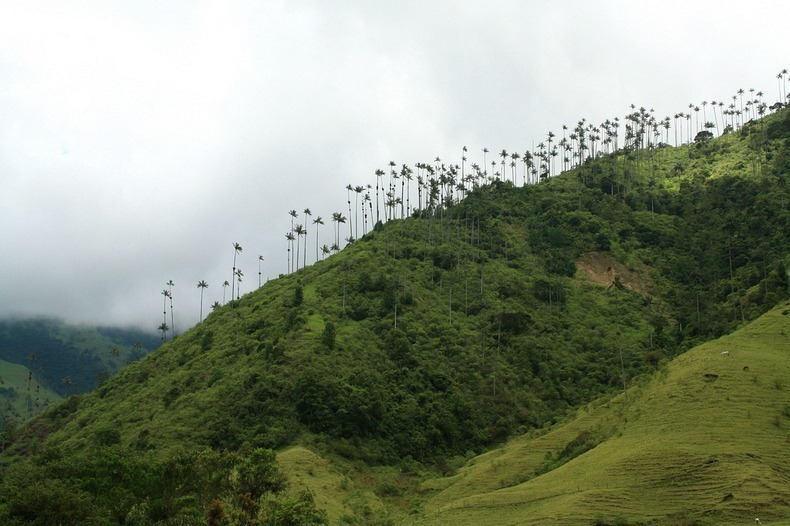Wax palms grow up to 50 meters and can live for up to 120 years. The leaves are dark green and grayish, the trunk is cylindrical, smooth, light colored and covered with wax. The wax was used to make soap and candles, until the introduction of electricity. The outer part of the stem of the palm has been used locally for building houses, and was used to build water supply systems for poor farmers. The fruit served as food for cattle and pigs.

For centuries, the Christian worshippers used to cut palms fronds from their wax palm trees to celebrate Palm Sunday, waving graceful waxy branches in celebration of Christ’s triumphal entry into Jerusalem. The exploitation of the indigenous people drastically reduced the number of wax palms, prompting the Colombian government to begin providing protection for the remaining trees. In 1985, an edict sponsored by both the Catholic Church and the government, forbid the cutting of wax palms frond under threat of penalty. The trees remain preserve in the valley of Cocora, where they can be seen and touched.










Source
